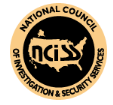Online harassment and cyberstalking continues to increase, and yet is often not taken as seriously as physical stalking. According to researchers at Bedford University in England, cyberstalking is now more common than physical stalking, driven partially by the anonymity of the internet. How do you know if you’re a victim of cyberstalking (being harassed online) and what can you do about it?
What is Cyberstalking?
Cyberstalking is when a person uses the internet or electronic means to harass, threaten or cause fear and distress for another person over multiple incidents, and often multiple mediums, such as email, social media, text messages, smartphone apps and chats. Due to the anonymity of the internet and a high potential for underreporting, cyberstalking is a growing problem for internet users of all ages and backgrounds. If you have been repeatedly harassed or threatened by a particular individual online, often on multiple platforms such as Facebook, Twitter, Instagram, emails or messenger apps, then you could be experiencing cyberstalking – even if you don’t know the person who is harassing you.
A 2017 Pew Research Center study found that 54% of cyberstalking victims either did not know the identity of their stalker or their stalker was a complete stranger they’d never met in person. When you add the fact that the cyberstalker could be in a different state or even a different country from the victim, it can be difficult to prosecute. When your cyberstalker could be anyone from the woman three doors down in your apartment building to a person on the other side of the world, it might feel like there is nothing you can do to stop it.
Putting a Stop to Cyberstalking
Even if you don’t know the true identity of someone who is stalking you online, there are still things you can do to protect yourself. First, make sure all of your security settings on all of your online accounts (including social media) are set to the most private options available. Also make sure you have set up your home Wi-Fi with best security practices in mind. Change any online password you are concerned about to a random complex password (example: X56ug3k+g!) to prevent a cyberstalker from gaining access to banking and other sensitive information. Finally, be sure to fully document all incidents of harassment. The website https://www.fightcyberstalking.org/ has a downloadable toolkit with information on how to properly document incidents of harassment so that you have the necessary evidence needed to get as much help from law enforcement as possible.
Depending on the laws of your state, your local law enforcement agency might not have very many options if your harasser is out of state or is unknown to you. Should this occur, you can file a report with the FBI Internet Crime Complaint Center IC3, however, the length of time it can take to hear back from them can vary. Their response to your individual case could vary as well.
If you need immediate assistance, help with properly documenting the stalking behaviors you’re experiencing, help uncovering your stalker’s identity or anything else required to have the necessary evidence to put a stop to the harassment, a private investigator can help. Private investigators are experts in the collection and proper documentation of evidence, particularly for law enforcement cases and court cases. Cyberstalking is a crime and you don’t have to fight it alone.










